What does 'NOT SUPPORT' mean on Kenwood Car Receiver?
- KKaren WoodsSep 12, 2025
If “NOT SUPPORT” appears on your Kenwood Car Receiver, the connected phone does not support the Voice Recognition feature or phonebook transfer.
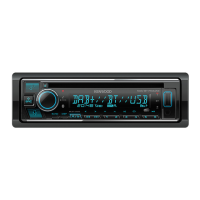
What does 'NOT SUPPORT' mean on Kenwood Car Receiver?
If “NOT SUPPORT” appears on your Kenwood Car Receiver, the connected phone does not support the Voice Recognition feature or phonebook transfer.
| DIN size | 1 DIN |
|---|---|
| CD player | Yes |
| Impedance | 40 Ω |
| Clock mode | 24h |
| Output power | 50 W |
| Product color | Black |
| Volume control | Buttons |
| Frequency range | 30 - 15000 Hz |
| Disc types supported | CD-R, CD-RW |
| Audio output channels | 4.0 channels |
| Equalizer bands quantity | 13 |
| Signal-to-Noise Ratio (SNR) | 40 dB |
| Audio formats supported | AAC, FLAC, MP3, WAV, WMA |
| Display type | LCD |
| Display number of lines | 2 lines |
| On Screen Display (OSD) languages | DUT, ENG, ESP, FRE |
| USB version | 2.0 |
| Bluetooth range | 10 m |
| Bluetooth version | 4.2 |
| Bluetooth profiles | A2DP, AVRCP, PBAP |
| USB ports quantity | 1 |
| Cables included | DC |
| Operating temperature (T-T) | -10 - 60 °C |
| FM band range | 87.5 - 108 MHz |
| LW band range | 153 - 279 kHz |
| Supported radio bands | DAB+, FM, LW, MW |
| Depth | 155.5 mm |
|---|---|
| Width | 182 mm |
| Height | 53 mm |
| Weight | 1200 g |
Explanation of the Class 1 Laser Product marking and its safety implications.
Identifies the manufacturer and EU representative for compliance declarations.
Provides declarations of conformity for radio equipment and RoHS directive in various languages.
Defines the terms and conditions for using the embedded software, including licensing.
Outlines user rights, prohibitions on modification, and intellectual property rights.
Details conditions for license transfer, termination, and destruction of licensed software.
Specifies limitations of liability, indemnification clauses, and confidentiality obligations.
Crucial warnings and cautions for safe operation and proper use of the device.
Guidance on understanding the manual's conventions, symbols, and references.
Identifies and explains the function of each button and indicator on the device faceplate.
Instructions for fundamental operations like power, volume, and source selection.
Steps to select display language and disable the demonstration mode during initial setup.
Instructions for configuring the device's clock and date settings.
Guide to setting up additional optional features while the unit is in STANDBY mode.
Explains the principles of Digital Audio Broadcasting (DAB) and its features.
Instructions for connecting the DAB antenna and performing the initial service list update.
Procedure to select the appropriate crossover type based on speaker connection.
Steps to search for stations, store presets, and select stored stations.
Details on various tuning settings like Seek Mode, Local Seek, and Mono Set.
Instructions for inserting a CD and how the source changes automatically.
Guide to connecting USB storage devices and how playback starts.
Steps for connecting an iPod or iPhone via USB for audio playback.
How to choose the desired storage drive when using a USB device with multiple drives.
Options for controlling iPod/iPhone directly or via the unit's interface.
Methods for browsing and selecting audio files from folders, lists, or using search functions.
Utilizing skip search and alphabetical search features for efficient file navigation.
Steps to install the Spotify app, create an account, and connect the device.
Instructions for starting playback, controlling music, and saving songs.
Enabling the auxiliary input and connecting portable audio players.
Procedure to assign a custom name to connected external audio devices.
Guide to installing and setting up the KENWOOD Remote application for device control.
Steps to select whether to use an iOS or Android device with the remote application.
Overview of supported Bluetooth profiles, codecs, and microphone connection.
Step-by-step guide to pairing new Bluetooth devices and auto-pairing.
Managing incoming calls, answering, rejecting, and during-call operations.
Adjusting microphone gain, noise reduction, and echo cancellation for clearer calls.
Setting the device to automatically answer incoming calls and defining the answer delay.
Instructions for initiating calls using call history or the phonebook.
Methods for direct dialing, using voice commands, and managing contacts.
Activating voice recognition and saving contacts to memory buttons.
Managing Bluetooth connections, device selection, and PIN code editing.
Restoring all Bluetooth settings to their factory defaults.
Connecting an audio player via Bluetooth and controlling playback.
Steps for connecting your smartphone and pairing it with the Alexa mobile application.
Details on Direct Link and Manual Pairing methods for Alexa setup.
Activating Alexa, communicating via microphone, and basic voice commands.
Understanding connection status, troubleshooting disconnections, and restarting.
Adjusting audio controls like subwoofer level and selecting preset equalizer modes.
Customizing sound settings using manual EQ bands or easy EQ presets.
Configuring speaker size and crossover frequencies for optimal audio output.
Adjusting speaker delay times to create a suitable sound environment.
Customizing illumination colors for different zones and adjusting brightness levels.
Configuring display dimmer settings and changing display information content.
Overview of installation parts and the fundamental steps for mounting the unit.
Detailed wiring instructions, including ISO connector compatibility for specific vehicles.
Step-by-step guide for installing the unit into the vehicle's dashboard.
Instructions on how to safely detach the unit from the dashboard.
Guides for connecting external microphones and output terminals for amplifiers.
Instructions for installing the supplied DAB film antenna, including placement advice.
Procedures for cleaning the unit, connectors, and handling discs.
Lists supported audio file formats, playable media, and compatibility notes for USB/iPod/iPhone.
Solutions for common problems like no sound, wiring errors, or unit not turning on.
Resolving poor DAB reception, antenna errors, and analog radio static.
Resolving issues with disc ejection, playback order, file loading, and device detection.
Troubleshooting iPod errors, memory full, and Spotify application connection problems.
Resolving issues with device detection, pairing, call quality, and audio playback.
Troubleshooting Alexa response, connection stability, and setup errors.
Technical data for DAB, FM, MW, and LW radio reception, including sensitivity and frequency ranges.
Details on media playback capabilities, file formats, and input/output specifications.
Technical specifications for Bluetooth version, frequency range, output power, and supported profiles.
Information on output power, speaker impedance, tone action, and preout levels.
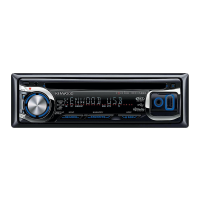
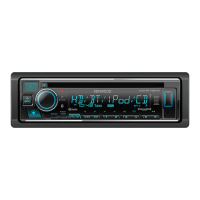
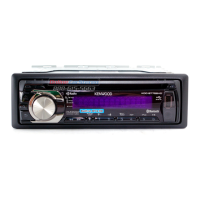
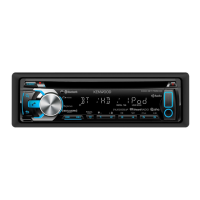

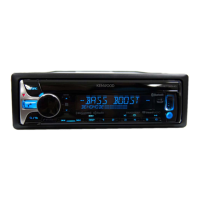





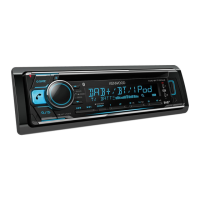
